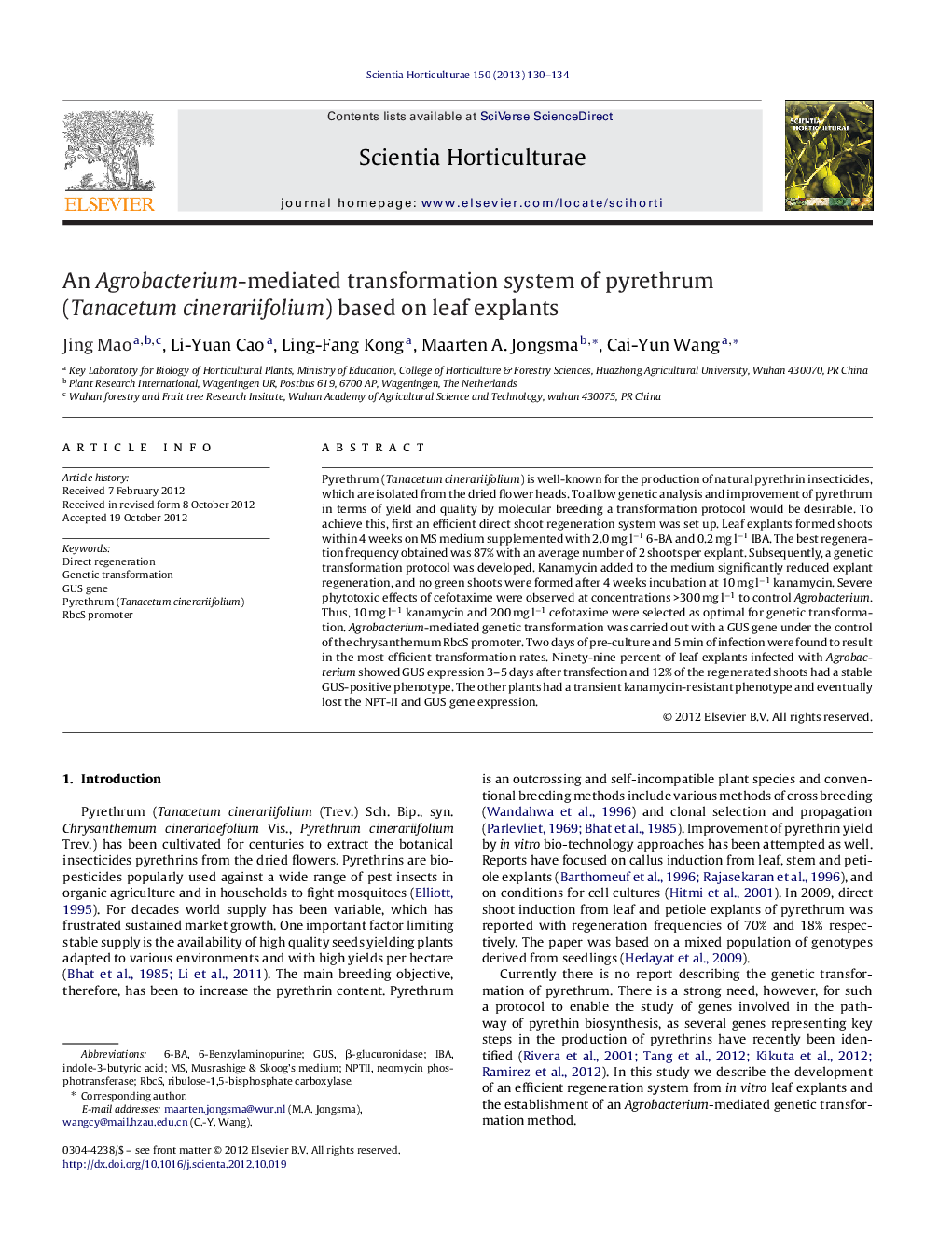| Article ID | Journal | Published Year | Pages | File Type |
|---|---|---|---|---|
| 4567262 | Scientia Horticulturae | 2013 | 5 Pages |
Pyrethrum (Tanacetum cinerariifolium) is well-known for the production of natural pyrethrin insecticides, which are isolated from the dried flower heads. To allow genetic analysis and improvement of pyrethrum in terms of yield and quality by molecular breeding a transformation protocol would be desirable. To achieve this, first an efficient direct shoot regeneration system was set up. Leaf explants formed shoots within 4 weeks on MS medium supplemented with 2.0 mg l−1 6-BA and 0.2 mg l−1 IBA. The best regeneration frequency obtained was 87% with an average number of 2 shoots per explant. Subsequently, a genetic transformation protocol was developed. Kanamycin added to the medium significantly reduced explant regeneration, and no green shoots were formed after 4 weeks incubation at 10 mg l−1 kanamycin. Severe phytotoxic effects of cefotaxime were observed at concentrations >300 mg l−1 to control Agrobacterium. Thus, 10 mg l−1 kanamycin and 200 mg l−1 cefotaxime were selected as optimal for genetic transformation. Agrobacterium-mediated genetic transformation was carried out with a GUS gene under the control of the chrysanthemum RbcS promoter. Two days of pre-culture and 5 min of infection were found to result in the most efficient transformation rates. Ninety-nine percent of leaf explants infected with Agrobacterium showed GUS expression 3–5 days after transfection and 12% of the regenerated shoots had a stable GUS-positive phenotype. The other plants had a transient kanamycin-resistant phenotype and eventually lost the NPT-II and GUS gene expression.
► The best direct shoot regeneration rate from leaf of pyrethrum ‘No. 39’ was 87%. ► The best regeneration medium was supplemented with 2.0 mg l−1 6-BA and 0.2 mg l−1 IBA. ► Selective medium were optimized with 10 mg l−1 kanamycin and 200 mg l−1 cefotaxime. ► Genetic transformation was set up with 2 days pre-culture and 5 min Agrobacterium infection. ► The RbcS promoter resulted in strong GUS expression in both green tissues and roots.
